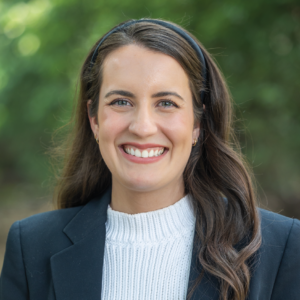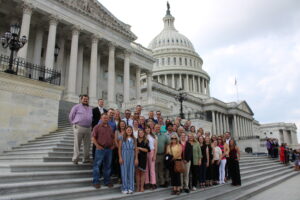Dairy farmers from across the nation approved a new initiative to boost dairy exports and welcomed a new cooperative member as well as new farmer-leaders at the National Milk Producers Federation’s Board of Directors meeting, which concluded today.
“If you imagine that on top of that the millions of people who buy something we touch every day with the products, the nutritious products that we produce, not just at dinner, not just at breakfast, but all day long, because of what you can turn dairy into, it’s a pretty amazing story, really,” said NMPF Board Chairman Randy Mooney, a farmer from Rogersville, MO, in remarks at the meeting. “We put some of the most nourishing products there are into consumers every day, globally, and that’s something that I think we can all be proud of.”
NMPF’s board meeting brought together more than 100 farmers and dairy-cooperative leaders at the nation’s largest dairy farmer trade organization, which serves as the policy voice for milk producers and the cooperatives they own in Washington.
The meeting was held in conjunction with NMPF’s annual fly-in of its Young Cooperators, who met with members of Congress to discuss pressing dairy concerns and received a U.S. Capitol tour from Rep. Adam Gray, D-CA; it also featured remarks from Reps. Dusty Johnson, R-SD, David Valadao, R-CA, and Tony Wied, R-WI.
The board voted to implement a new member-funded export assistance program called NEXT, starting July 1. A majority of the milk supplied to consumers worldwide by NMPF members is supporting the NEXT program with a 2 cent/cwt contribution through 2028. The NEXT program will focus on supporting U.S. dairy exports in key markets around the world, including Latin America, the Caribbean and Asia.
The board also welcomed two new directors and one new cooperative member. Joining as new board members are:
- Corey Gillins, Dairy Farmers of America
- Tim Kuenzi, Darigold
- Brenda Dehart, Foremost Farms
NMPF’s newest member, approved today, is Lanco-Pennland Cooperative, based in Hagerstown, MD. Lanco-Pennland produces roughly 400 million pounds of milk annually and is a leading East Coast milk marketer.
The Young Cooperators (YC) Dairy Policy and Legislative Forum brought together young dairy leaders from 15 states for two days of education and advocacy on Capitol Hill, discussing key dairy priorities directly with members of Congress and staffs to advocate for the Whole Milk for Healthy Kids Act, agricultural labor reform and strong dairy trade policies.
Also in conjunction with the meeting, The National Dairy Farmers Assuring Responsible Management (FARM) Program opened nominations for its annual FARM Excellence Awards, which recognizes farmers, cooperatives and processors that provide consumers with safe, wholesome milk with integrity. Nominations may be submitted via an online form by Aug. 4.

 By Theresa Sweeney-Murphy, Senior Director, Communications & Outreach
By Theresa Sweeney-Murphy, Senior Director, Communications & Outreach




